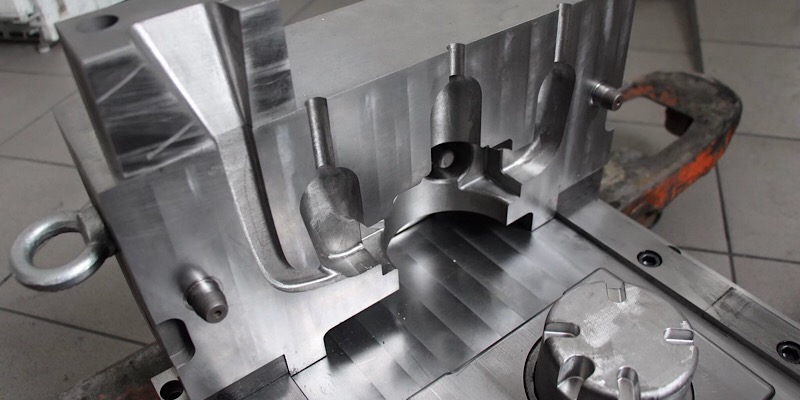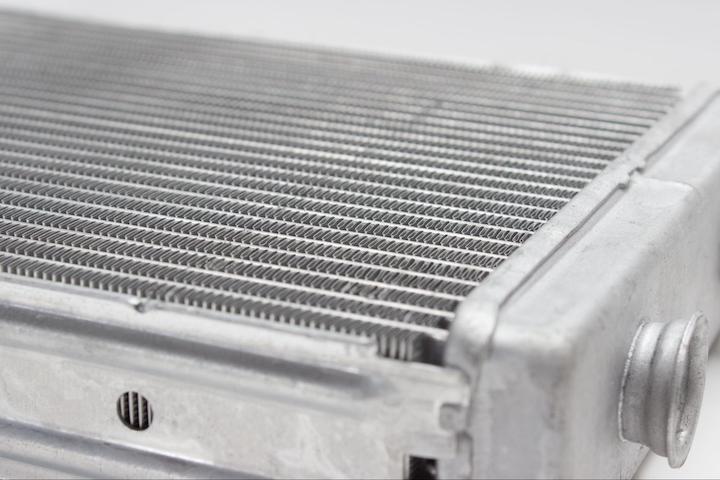Exploring the Essential Applications and Use Aluminum Shop in Modern Manufacturing
Light weight aluminum factories play an important duty in contemporary manufacturing, offering diverse markets with their distinct homes. From automotive components that improve gas efficiency to aerospace frameworks that prioritize weight, light weight aluminum's adaptability appears. Its applications extend to building and customer electronics, highlighting its longevity and energy effectiveness. The advancements in aluminum casting methods and future trends require a closer exam, as they may redefine its effect on production.
The Role of Light Weight Aluminum Foundries in Automotive Production
As the automobile industry significantly focuses on light-weight materials to boost fuel efficiency and efficiency, aluminum shops have become necessary factors to manufacturing processes. These shops focus on producing elements that fulfill the strict needs of modern-day cars, such as engine blocks, transmission housings, and structural components. Aluminum's desirable residential or commercial properties-- such as high strength-to-weight ratio, deterioration resistance, and exceptional thermal conductivity-- make it an optimal choice for vehicle applications.
Additionally, light weight aluminum shops make use of innovative casting methods, including die casting and sand spreading, to develop sturdy and detailed components. This capacity enables producers to optimize styles for performance while lessening weight. Using light weight aluminum additionally supports sustainability goals, as it is extremely recyclable and decreases energy consumption in automobiles. By assisting in the assimilation of light weight aluminum into vehicle design, shops play an essential duty in shaping the future of the auto industry, advertising efficiency and advancement across the board.
Aerospace Applications: Lightweight Solutions for Flight
Light weight aluminum foundries play a substantial duty in the aerospace field, where the need for light-weight products is critical for improving gas performance and performance in aircraft. The unique residential properties of light weight aluminum, including its high strength-to-weight proportion and deterioration resistance, make it a suitable option for numerous aerospace elements. These parts consist of architectural components, engine casings, and landing gear, which contribute to total airplane efficiency.
The use of aluminum alloys, especially those established with innovative spreading strategies, permits the manufacturing of intricate designs and complex shapes while lessening weight. Furthermore, light weight aluminum's recyclability aligns with the aerospace industry's sustainability goals, decreasing ecological effect. With continuous developments in aluminum foundry innovations, producers can enhance production processes, bring about raised performance and minimized prices. As the aerospace industry increasingly prioritizes innovations that enhance performance, aluminum shops will certainly remain essential to creating lightweight solutions for modern-day trip.
Structure and Building: Enhancing Structural Honesty
In the structure and building industry, a substantial focus is positioned on enhancing architectural honesty through the use of light weight aluminum. Recognized for its high strength-to-weight ratio, light weight aluminum supplies longevity without endangering on weight, which is vital in modern building designs. Its resistance to deterioration even more assures longevity, making it an ideal product for numerous structural parts, including light beams, frames, and cladding.
Light weight aluminum also promotes ingenious design opportunities, allowing designers and designers to develop cosmetically pleasing structures while maintaining safety and security requirements. The product's flexibility enables its application in both business and property tasks, from high-rise buildings to bridges. Furthermore, developments in aluminum factory strategies have improved the precision of light weight aluminum parts, guaranteeing they meet strict building regulations. On the whole, the assimilation of light weight aluminum in construction not only improves architectural honesty yet also contributes to sustainable building practices, given its recyclability and energy-efficient production methods.
Consumer Electronics: The Rise of Aluminum in Innovation
In the domain of consumer electronics, aluminum has acquired prestige as a result of its light-weight layout benefits and remarkable thermal conductivity. This shift not only enhances product transportability yet additionally improves gadget performance by effectively dissipating warmth. As technology continues to advance, the function of aluminum in developing streamlined and efficient tools is progressively substantial.
Lightweight Layout Benefits
As consumer electronics evolve, the need for light-weight yet resilient materials has actually surged, making aluminum an increasingly preferred option amongst suppliers. Its low thickness enables the development of sleek tools that are simple to use and lug, significantly boosting mobility. The strength-to-weight proportion of aluminum warranties that products can endure day-to-day deterioration without endangering performance. Additionally, the malleability of light weight aluminum allows manufacturers to create intricate forms and forms, additionally contributing to ingenious looks and performance. This light-weight quality additionally plays a necessary role in power efficiency, as lighter gadgets require less power to operate. As an outcome, light weight aluminum not only fulfills the advancing aesthetic needs but additionally aligns with the modern-day focus on sustainability in consumer electronic devices.
Thermal Conductivity Perks
Thermal conductivity is a crucial variable in the efficiency of customer electronics, and aluminum master this domain name. Its high thermal conductivity enables reliable heat dissipation, which is necessary for keeping optimal operating temperatures in gadgets such as smart devices, laptop computers, and gaming consoles. By promoting rapid heat transfer away from sensitive elements, aluminum helps stop overheating, thereby enhancing performance and extending device durability. In addition, the light-weight nature of light weight aluminum complements its thermal buildings, making it an ideal selection for mobile modern technology. As makers increasingly prioritize efficiency and energy performance, light weight aluminum's function in thermal monitoring comes to be also much more significant, leading to its expanding adoption in contemporary electronic designs. This trend underscores aluminum's importance in consumer electronics development.
Marine Market: Deterioration Resistance in Harsh Environments
Deterioration resistance is a crucial consider the marine industry, where equipment and structures are consistently revealed to extreme deep sea atmospheres. Light weight aluminum, especially in its alloy forms, offers significant advantages in this regard. Its natural oxide layer gives a safety barrier that protects against corrosion, making it excellent for vessels, anchors, and other aquatic applications.
Marine-grade aluminum alloys, such as 5083 and 6061, are especially developed to withstand the destructive effects of deep sea and weather. These alloys not just stand up to rust but additionally maintain architectural integrity and toughness in time. Applications range from hulls and superstructures of ships to elements in offshore platforms.
The light-weight nature of aluminum additional improves its viability, making it possible for improved fuel effectiveness and convenience of handling - aluminum foundry. As the aquatic sector continues to focus on longevity and performance, aluminum continues to be an important material option for standing up to corrosion in demanding marine settings
Advancements in Light Weight Aluminum Casting Techniques
While conventional light weight aluminum spreading methods have served see this site the sector well, current innovations are transforming the landscape of light weight aluminum production. Strategies such as 3D printing of cores and mold and mildews are getting traction, enabling for fast prototyping and decreased lead times. This development allows makers to produce complicated geometries that were previously challenging to accomplish with traditional casting approaches. In addition, improvements in die-casting technology, including the usage of high-pressure die-casting (HPDC), have improved the accuracy and surface coating of cast light weight aluminum elements, bring about improved performance in numerous applications.
Additionally, the adoption of financial investment casting has actually permitted greater layout flexibility and lowered material waste. aluminum casting company. Innovations in alloy compositions are additionally substantial, as they improve mechanical residential or commercial properties and corrosion resistance. Generally, these growths not just streamline manufacturing processes but additionally add to more lasting practices within the light weight aluminum factory sector, making it adaptable to the evolving needs of modern production
Future Trends in Light Weight Aluminum Factory Production
The future of aluminum foundry manufacturing is positioned for significant transformation via automation, boosting effectiveness and precision in manufacturing procedures. Lasting methods are progressively becoming a priority, as shops look for to reduce their environmental impact while fulfilling expanding regulative demands. In addition, improvements in alloy development will certainly make it possible for the development of stronger, lighter materials customized for diverse applications, driving development in the sector.
Automation in Shop Processes

Lasting Production Practices
An expanding focus on sustainable manufacturing practices is reshaping the future of aluminum shop manufacturing. Sector leaders are significantly embracing energy-efficient innovations and recycling initiatives to minimize waste and reduce carbon impacts. The usage of recycled aluminum considerably lowers power intake contrasted to key aluminum production, making it a favored option for ecologically conscious suppliers. In enhancement, cutting-edge spreading methods are being developed to enhance product performance and decrease exhausts. Business are additionally buying renewable resource resources, such as solar and wind, to power their operations sustainably. aluminum casting company. learn the facts here now By incorporating these methods, the light weight aluminum foundry sector not only fulfills regulative needs but additionally reacts to customer need for greener products, inevitably look at this now paving the method for an extra sustainable production landscape
Advanced Alloy Development
Improvements in aluminum alloy growth are readied to play a substantial role in the future of factory manufacturing, particularly as sustainability and performance needs rise. The sector is increasingly concentrating on creating high-strength, lightweight alloys that can endure severe conditions while reducing environmental impact. Researchers are checking out innovative structures, such as aluminum-lithium and aluminum-scandium alloys, which guarantee improved mechanical homes and decreased weight. Additionally, the integration of sophisticated manufacturing techniques, including additive production and accuracy spreading, allows for more facility geometries and reduced material waste. As governing pressures and consumer preferences change towards greener options, the advancement of energy-efficient and recyclable alloys will certainly be crucial. The future landscape of light weight aluminum factory production hinges on these advancements in alloy technology.

Regularly Asked Concerns
What Are the Ecological Impacts of Light Weight Aluminum Foundry Workflow?
Light weight aluminum factory procedures can result in considerable environmental effects, consisting of greenhouse gas exhausts, energy usage, and waste generation. In addition, improper administration of toxins may cause dirt and water contamination, affecting regional ecosystems and neighborhoods.
Exactly How Does Light Weight Aluminum Recycling Affect Shop Processes?
Aluminum recycling enhances factory procedures by providing an economical raw product, lowering power intake and exhausts. This lasting practice enhances effectiveness, lessens waste, and sustains the round economy, benefiting both makers and the setting.
What Precaution Are Applied in Light Weight Aluminum Foundries?
Aluminum foundries apply different precaution, consisting of personal protective equipment, proper air flow systems, normal safety and security training, fire avoidance procedures, and devices maintenance procedures to decrease hazards and assure a secure functioning atmosphere for all workers.
How Do Foundries Ensure Quality Assurance in Light Weight Aluminum Casting?
Foundries assure high quality control in aluminum spreading via extensive material inspections, specific temperature level tracking, standard procedures, and normal screening of actors items. These actions help keep consistency, minimize problems, and meet industry specifications effectively.
What Are the Expense Elements in Light Weight Aluminum Factory Production?
Price elements in light weight aluminum shop production include resources prices, power consumption, labor expenses, devices maintenance, and overhead costs. Additionally, production quantity and complexity of styles significantly affect overall manufacturing prices and success.
As the auto industry progressively focuses on lightweight products to enhance fuel performance and efficiency, aluminum factories have actually become crucial contributors to producing procedures. Light weight aluminum foundries play a considerable duty in the aerospace sector, where the demand for lightweight products is paramount for enhancing fuel effectiveness and efficiency in aircraft. Furthermore, innovations in aluminum foundry methods have actually boosted the precision of aluminum elements, guaranteeing they fulfill stringent building codes. While typical aluminum casting approaches have served the market well, current innovations are transforming the landscape of aluminum manufacturing. The use of recycled light weight aluminum substantially decreases energy usage compared to main light weight aluminum manufacturing, making it a preferred choice for environmentally conscious makers.